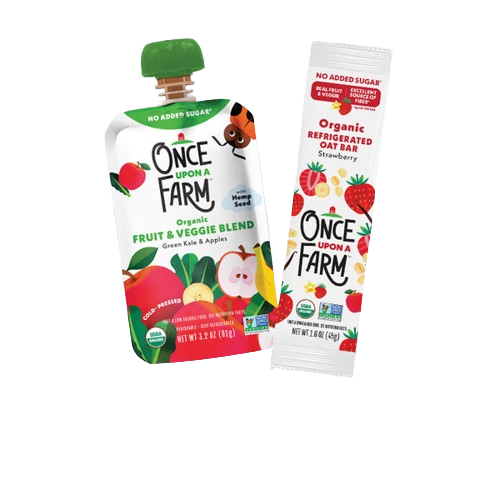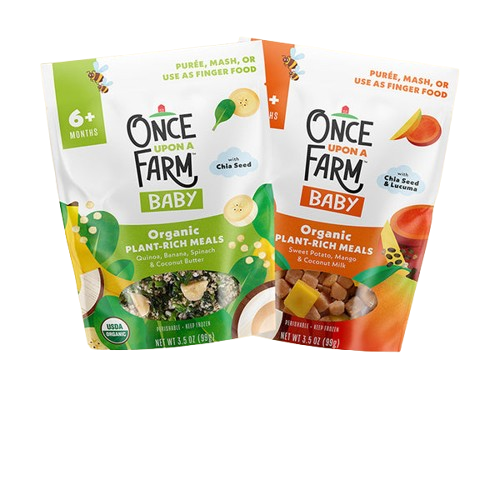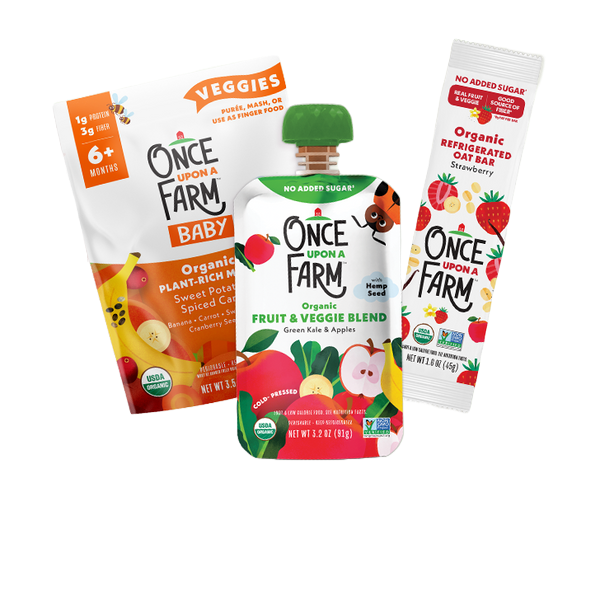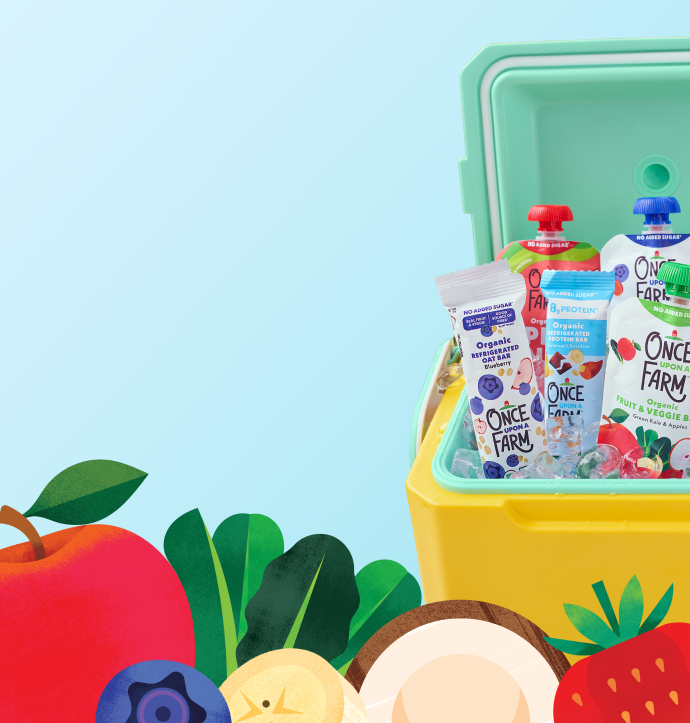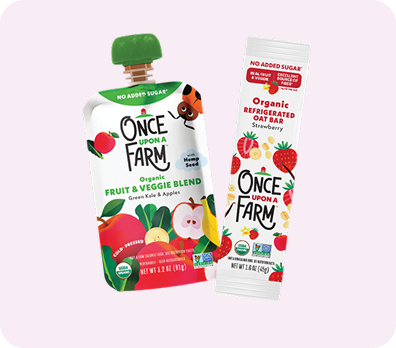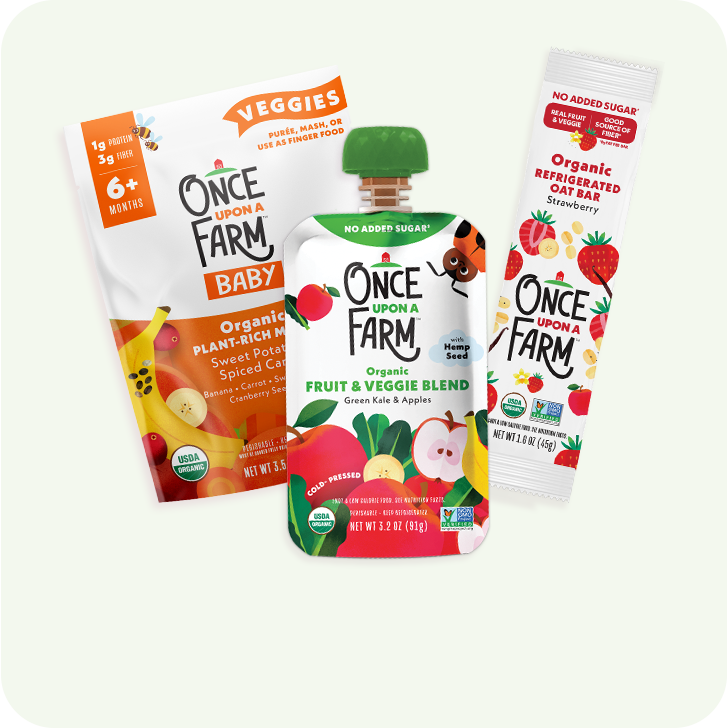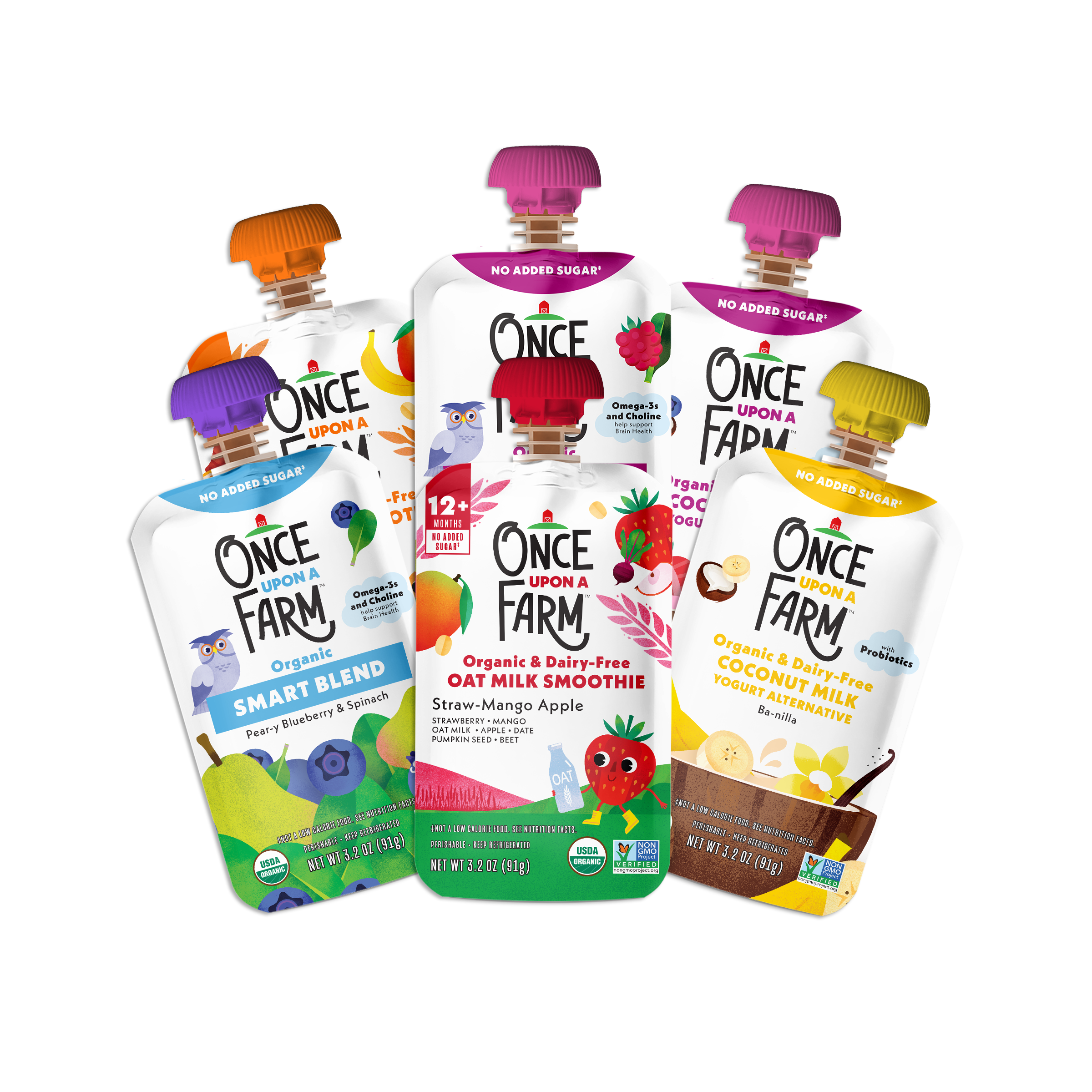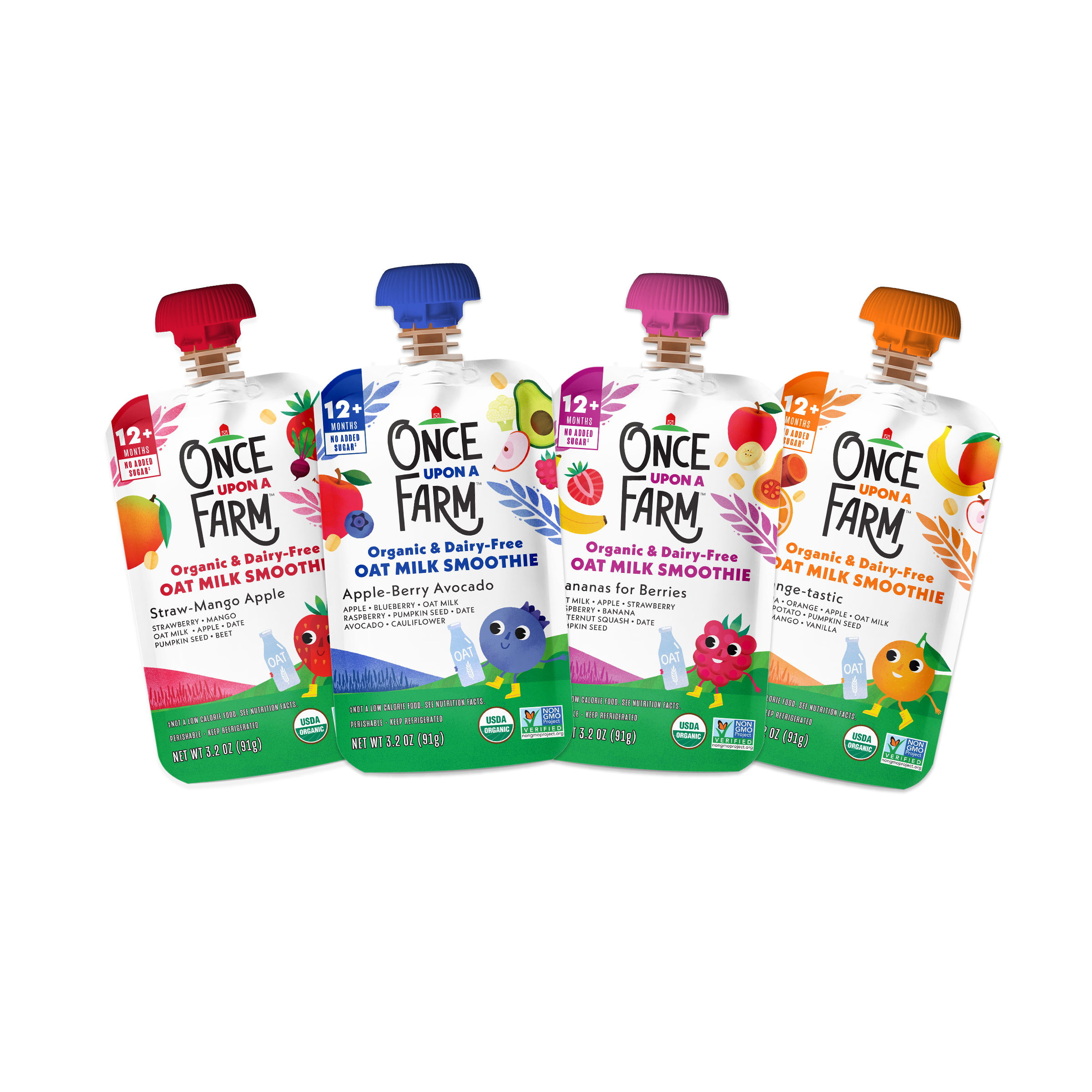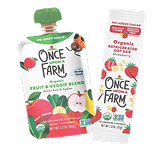Starting solids is a big developmental milestone, for babies and parents alike. It can seem overwhelming, but we’re here to help with guidance on the what, how, and why of introducing whole foods to your little one. Plus, a handy (and printable) list!
The Importance of a Diverse Diet
When it comes to a healthy, balanced diet, diversity is key. This is as true for babies as it is for adults. As O’Farm expert Kacie Barnes, MCN, RDN, LD tells us, “Every food has a different mix of macronutrients and micronutrients. The body needs to get a mix of protein, fat, and carbohydrates each day.” It’s also essential to get vitamins and minerals (micronutrients) for children to grow and develop appropriately.
Helping to Avoid Picky Eaters
“Diversity is also how we fight against picky eating.” She notes. The more diversity you can keep in their diet, the less likely you will struggle with picky eating. While picky eating can’t be fully prevented, she reminds us, “The more variety you offer, the more opportunities for your kids to try and like different foods.”
How to Introduce Solids
The American Academy of Pediatrics (AAP) recommends starting solids no earlier than 6 months of age (here are some signs that your child may be ready). While the process of introducing solids may seem daunting, it can be a super exciting time. As Barnes tells us, “Babies are open to tasting a wide variety of foods.” And again, variety is the name of the game. So, think fruits, veggies, proteins, grains. Also, “Make sure to introduce healthy fats.” She says, “Fat is crucial to a developing central nervous system.” You’ll want to avoid honey (cooked and raw) and minimize sugars. Minimizing sugars helps to maximize nutrition, although you won’t be able to avoid them completely.
Variety applies to textures, too. Barness suggests introducing “a variety of developmentally appropriate textures.” Both purees and soft, smushable finger foods will help your baby eat a more diverse diet and get exposed to different flavors and textures. Remember, you’ll want to introduce top allergens at this stage—this can help reduce the chance of developing food allergies. Common allergens include peanuts, tree nuts, milk, shellfish, soy, egg, wheat, and fish (specific examples listed below).
100 Foods Before 1 Checklist
Because we all love lists, we worked with Barnes to create a super helpful and comprehensive list of 100 foods that are great starting solids for your baby. Remember, introducing solids is all about promoting diversity and offering lots of variety. And these are just guidelines—you’ll find the foods and cadence that work best for your family. Go at your own pace, and remember to save room. There will be leftovers.
Printing & Usage Instructions:
- Click this link to download PDF file.
- Print the file in landscape mode as a full-color page
Note: Please ensure these foods are appropriate for your child's age and dietary needs. Be mindful of food size and texture, cutting them into age-appropriate pieces when necessary to minimize choking hazards. Always supervise your child while they eat.
Start checking off that list with Once Upon a Farm's organic baby food options: refrigerated purées and frozen meals. Take our quiz for age-based recommendations.

